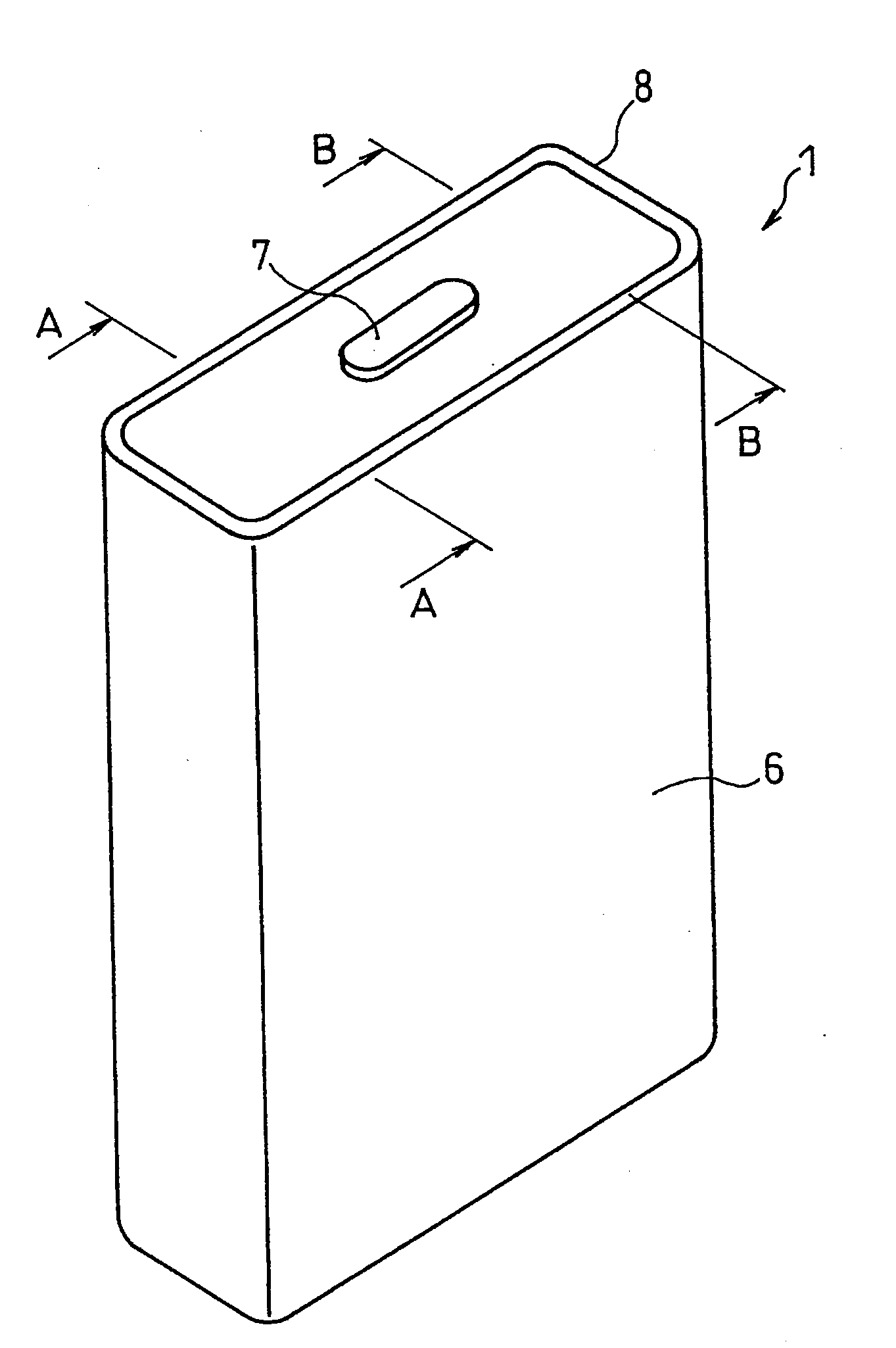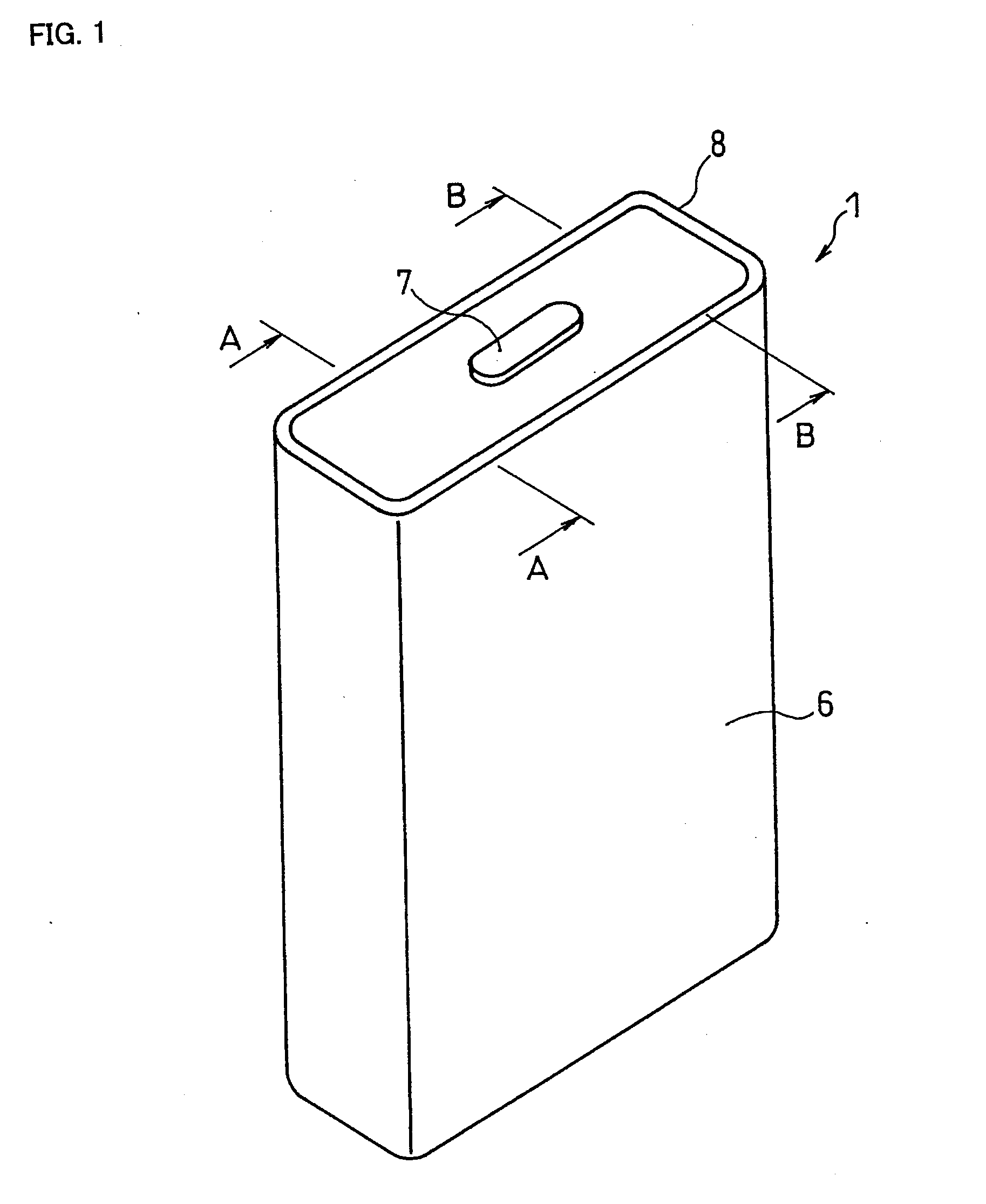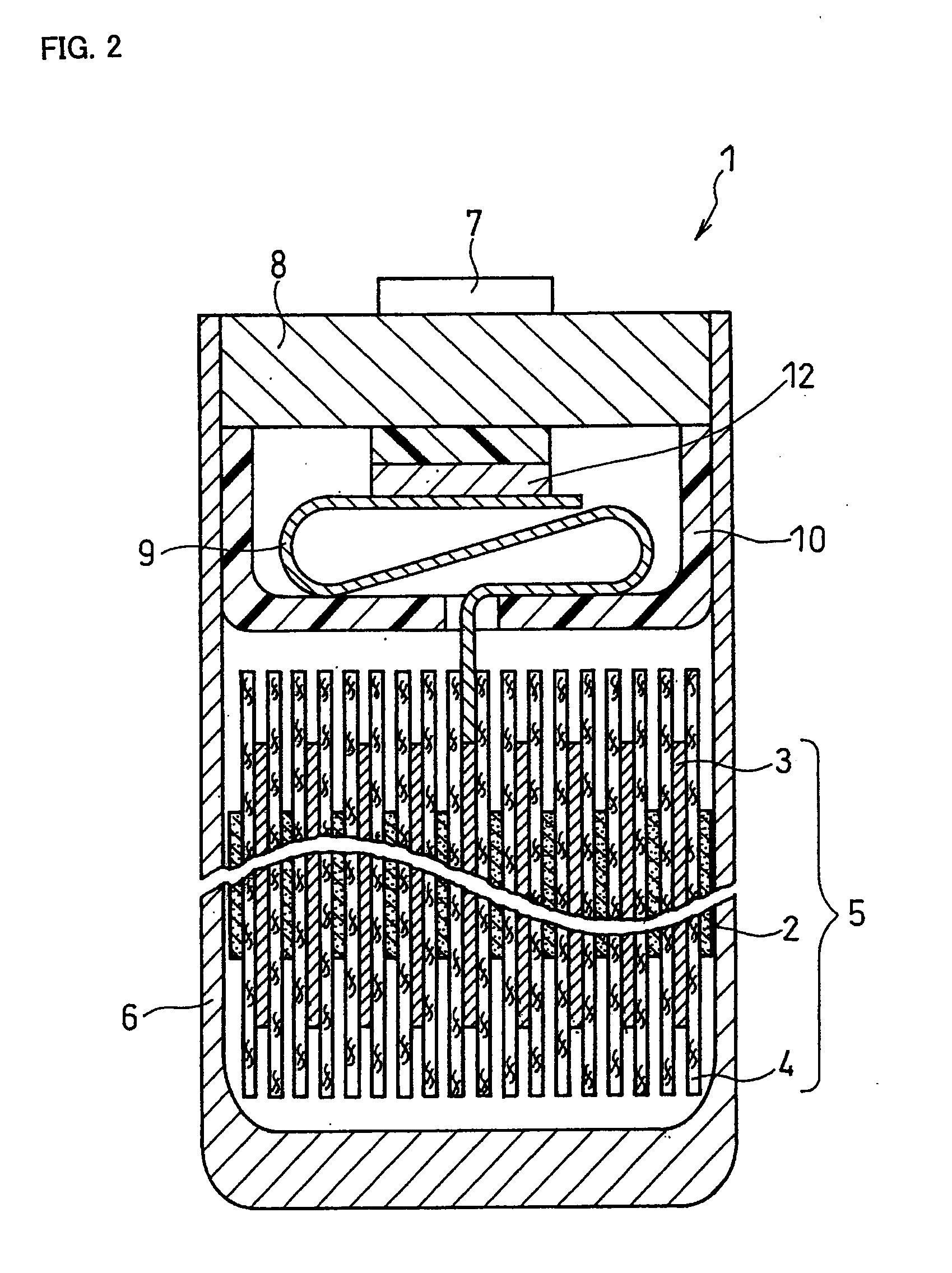Non-aqueous electrolyte secondary battery
a non-aqueous electrolyte, secondary battery technology, applied in the direction of non-aqueous electrolyte accumulator electrodes, cell components, electrical equipment, etc., can solve the problems of low capacity density, high production cost, and high price of non-aqueous electrolyte secondary batteries including the above-described positive electrode active materials, etc., to suppress the capacity degradation of the battery, the effect of excellent thermal stability and high conductivity
- Summary
- Abstract
- Description
- Claims
- Application Information
AI Technical Summary
Benefits of technology
Problems solved by technology
Method used
Image
Examples
example 1
(i) Preparation of LiNi1 / 3Mn1 / 3Co1 / 3O2 as Active Material B
[0149]To an aqueous solution prepared by dissolving nickel sulfate, manganese sulfate and cobalt sulfate in a molar ratio of 1:1:1, an aqueous solution of sodium hydroxide having a predetermined concentration was added to obtain a nickel (Ni)-manganese (Mn)-cobalt (Co) coprecipitated hydroxide. The Ni—Mn—Co coprecipitated hydroxide was filtered off, washed with water and dried in the air. The coprecipitated hydroxide having been dried was baked at 400° C. for 5 hours to obtain a Ni—Mn—Co oxide powder.
[0150]The obtained powder and a lithium carbonate powder were mixed together in a predetermined molar ratio. The obtained mixture was placed in a rotary kiln, and preheated in the air atmosphere at 650° C. for 10 hours. Successively, the mixture having been preheated was increased in temperature in an electric furnace up to 950° C. over a period of 2 hours, and thereafter baked at 950° C. for 10 hours. Consequently, LiNi1 / 3Mn1 / 3...
example 2
(v) Preparation of LiCo0.975Mg0.02Al0.005O2 as Active Material C
[0157]To an aqueous solution of cobalt sulfate, magnesium sulfate and aluminum sulfate in a molar ratio of 0.975:0.02:0.005, an aqueous solution of sodium hydroxide having a predetermined concentration was added to obtain a cobalt (Co)-magnesium (Mg)-aluminum (Al) coprecipitated hydroxide. The Co—Mg—Al coprecipitated hydroxide was filtered off, washed with water and dried in the air. The coprecipitated hydroxide having been dried was baked at 400° C. for 5 hours to obtain a Co—Mg—Al oxide powder.
[0158]The obtained powder and a lithium carbonate powder were mixed together in a predetermined molar ratio. The obtained mixture was placed in a rotary kiln, and preheated in the air atmosphere at 650° C. for 10 hours. Successively, the mixture having been preheated was increased in temperature in an electric furnace up to 950° C. over a period of 2 hours, and thereafter baked at 950° C. for 10 hours. Consequently, LiCo0.975Mg0...
example 3
[0161]A battery A3 was produced in the same manner as in Example 1 except that as the separator, a laminated film comprising a porous film (thickness: 16 μm) made of polyethylene (PE) and a porous film, made of aramid resin, carried thereon was used.
[0162]The above-described laminated film was prepared as follows.
[0163]To 100 parts by weight of NMP, 6.5 parts by weight of dried anhydrous calcium chloride (hereinafter abbreviated as CaCl2) was added. The obtained mixture was heated to 80° C. in a reaction vessel and thus CaCl2 was completely dissolved to obtain an NMP solution of CaCl2.
[0164]The temperature of the NMP solution was brought back to room temperature, and then 3.2 parts by weight of paraphenylenediamine was added to the NMP solution and was completely dissolved therein. Thereafter, the reaction vessel containing the NMP solution was placed in a thermostat bath set at 20° C., 5.8 parts by weight of terephthalic acid dichloride was dropwise added to the NMP solution over a...
PUM
 Login to View More
Login to View More Abstract
Description
Claims
Application Information
 Login to View More
Login to View More - R&D
- Intellectual Property
- Life Sciences
- Materials
- Tech Scout
- Unparalleled Data Quality
- Higher Quality Content
- 60% Fewer Hallucinations
Browse by: Latest US Patents, China's latest patents, Technical Efficacy Thesaurus, Application Domain, Technology Topic, Popular Technical Reports.
© 2025 PatSnap. All rights reserved.Legal|Privacy policy|Modern Slavery Act Transparency Statement|Sitemap|About US| Contact US: help@patsnap.com



